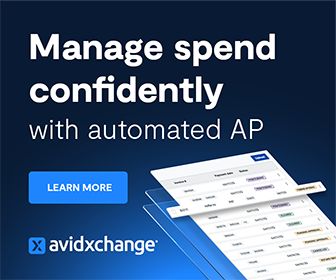Bill Gates once said, “If you really want to understand how Silicon Valley works today, you should watch the HBO series Silicon Valley.” Snapchat CEO Evan Spiegel said it was “basically a documentary.”
If you haven’t watched the show, it’s a hilarious take on the eccentricities of the people out there. But the aforementioned quotes also point to the fact that the show is realistic. From lowball offers to leadership battles to attempting to run a massive commercial software on a homebrew server, the show chronicles a founder’s somewhat hilarious journey from idea to global release—and all the steps along the way.
In addition to comedic elements including the very real “blood boy” episode, the show also explores the challenges that many firms have when they seek funding. From managing your cash runway to perfecting your numbers as you scale, finance professionals face a variety of challenges as they secure venture capital funding and scale up their services.
How can you prepare yourself for the road ahead? How can you hear the story of one controller’s journey leading the team through five stages of funding en route to a public company with a $5 billion market cap? Read on to learn more.
Running the Finance Organization: The Controller’s Role in Successful Series A and B Rounds
Whether you were there from day one or joined in time for the funding rounds, it’s likely that your time as a startup controller has already been a roller coaster. But it only gets more intense from here—investors will have higher expectations, stress levels will rise alongside your valuation, and new challenges will appear.
The Early Stages: Nailing Down Series A
The most likely point you were hired to replace an outsourced bookkeeper, the leadup to Series A is one of the more straightforward ones (at least compared to later stages). Yes, you probably need to organize the shoeboxes full of receipts, make sure you have enough runway, and need to run a few analyses, but ramping up for Series A funding is all about showing you can make money.
Usually, this occurs around $6MM for SaaS companies, according to Sage Intacct, and relies on your ability to prove that your product and team both work, that the unit economics are sustainable, and the cash your firm received from seed investments is being used well.
Often starting at an accelerator, Series A rounds are all about networking and growth. Investors will be looking for the following, so ensure you can prove the following:
- The combination of great idea and great business model.
- The scalability of your product and your team’s ability to sell it.
- The positive cash flow at your company and the ability to manage it.
Often, this is the point when companies graduate from QuickBooks to new ERP, so prepare to manage this process as well.
Proving Momentum and Sustainability: Bracing for Series B
Your rapidly growing customer base may have loved the initial product, but now that you’re doubling in size, your ability to retain this base and serve your customers’ needs is both a challenge and a necessity.
In series B funding, you’re seeking investors to help you expand your market reach, but investors will be wary if you can’t keep your current user base. This makes Series B one of the most challenging rounds for firms, because you’re not only proving that the money from Series A worked, but that you have the room and ability to take the next step.
In this phase, you may begin to see new offers from new VC firms. While Series A had given you a limited selection, you’re beginning to make waves and demonstrate that your firm has something big and tangible worth investing in. However, be ready to answer the following:
- What is your churn and how are you minimizing it?
- How easy is it to acquire new customers while continuing to deliver for existing ones?
- Are you generating enough revenue to prove you’re worth investing in?
- How easy do things flow? Can you tackle revenue recognition and speed up quoting?
Startup Scaled to IPO: A Controller’s Perspective Webinar
Series A and B are hard, but without the right advice, these could be downright nightmarish. But Series A and B are usually less than half the battle—the average firm goes through 4.4 funding rounds. If you’re looking to understand the journey through the next steps, we have an upcoming event you don’t want to miss.
We’re excited to announce our second webcast for controllers looking to steer their organizations through growth. Startup Scaled to IPO: a Controller’s Perspective, is a highly anticipated event featuring one controller’s journey of leading the finance department through five rounds of investment, managing the day-to-day as the organization approached its IPO, and helping the company reach a $5 billion market cap.
Whether you’re approaching Series A or already have your underwriters out on roadshows, this webcast is a must-attend event for any controller whose firm is bracing for scale. Moderated by Controllers Council Board Chair and Partner at Armanino Lindy Antonelli, we can’t wait to present this to our attendees.




